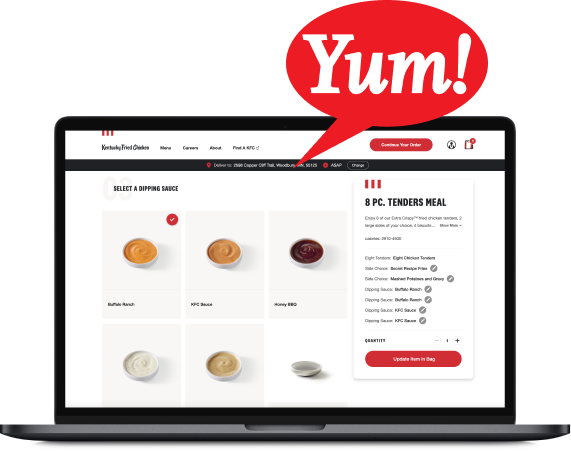With the recent introduction of Temporal Nexus, Temporal has expanded its platform to allow durable executions to span across teams, Namespaces, and even regions. Nexus brings new opportunities for building modular architectures while maintaining the stateful, event-driven properties that make Temporal so powerful. But is Temporal Nexus a good fit for your project?
In this post, we’ll explain Temporal Nexus, how it works, and whether you should adopt it in your software architecture.
What is Temporal Nexus?
Temporal is known for its durability and reliability. Its new feature, Nexus, preserves those capstone features while allowing various teams or services to communicate across Namespace boundaries. Temporal builds on the concept of Event Driven Architecture (EDA), where services can operate independently and handle intermittent failures without disrupting the whole system by abstracting all the boilerplate code associated with writing your own EDA from scratch.
At its core, Temporal Nexus allows different teams or services to communicate across Namespace boundaries while preserving the durability and resilience that Temporal is known for. Nexus allows teams to independently publish their Nexus services to a registry, allowing other teams to find and consume them.

Imagine you have two teams: one responsible for handling orders and another for processing payments. Today, these teams might communicate via external APIs. With Nexus, the payment team could expose a service directly via Temporal Nexus, and the order team could consume it as part of their workflows without needing to manage API layers or worry about cross-boundary complexities. In the event of failures, Nexus ensures the state is retained and automatically resumed.
Weighing the pros and cons of Nexus for your company? We can help.
Bitovi’s Temporal consultants offer a complimentary consultation, tell us a little about your project, and we’ll hop on a call.
Benefits of Temporal Nexus
When it comes to building resilient systems, handling synchronous and asynchronous workflows effectively is key. Temporal Nexus makes this easier, streamlining both communication types with built-in durability, simple service integration, and real-time observability—all designed to help your team boost performance with minimal overhead. In this section, you’ll learn more details about the benefits of Temporal Nexus.
Synchronous and Asynchronous Capabilities
Temporal Nexus is built to handle synchronous and asynchronous communication patterns, allowing developers to design workflows that align with their system’s operational needs.
Moreover, Nexus RPC allows the same operation to support sync and async patterns. This flexibility is important for teams with mixed requirements—where some tasks need quick responses while others involve more complex, extended processes. The RPC mechanism ensures that both types of operations are handled seamlessly within the same infrastructure without additional middleware or custom retry logic.
Seamless Integration and Durable Execution
Instead of exposing APIs, which can introduce complexity and overhead, Nexus allows you to register services and communicate across Namespaces with minimal friction. It abstracts many underlying details while preserving the benefits of Temporal’s durable execution model, allowing teams to work more independently while still sharing key services.
One of the standout features of Nexus's asynchronous capability is durability. Unlike traditional async communication mechanisms, which will require retry and error handling, Nexus is backed with the same durable execution model that executes Workflows.
Visibility and Observability
By using Nexus, you also gain full observability into cross-namespace Workflow communication, with the Temporal UI providing real-time insights into how to sync and async operations are progressing. Whether tracking a series of synchronous calls or monitoring the status of an asynchronous workflow, the platform offers comprehensive visibility, allowing teams to understand bottlenecks or errors and optimize their systems.
Why Use Temporal Nexus?
1. Team Isolation with Namespace Separation
Namespaces in Temporal effectively isolate workloads between teams, ensuring that resources, failures, or security boundaries are appropriately respected. Temporal Nexus takes this to another level by enabling seamless communication across these boundaries. This is particularly valuable when different teams manage different services that need to interact with each other (like an order service needing to interact with a payment service).
2. Reduce the Need for Wrapping API Calls
Today, it's common for Workflows in different Namespaces to communicate via Activities that call internal APIs. While this works, it adds a layer of complexity. With Nexus, you can eliminate the need for these wrapper activities by allowing cross-namespace communication directly from Workflow-to-Workflow via Nexus operations.
3. Enhanced Observability
Thanks to Nexus’s integration with Temporal’s observability tools, you’ll have full visibility into cross-namespace communications. The Temporal UI will provide linked insights between Nexus calls, making it easy to track failures, monitor performance, and ensure all communications run smoothly.
When You Might Want to Skip Nexus
While Temporal Nexus offers significant advantages for large, distributed systems, it may not fit every project. Here are a few scenarios where you might want to hold off:
1. Smaller Projects with Simple Needs
If your application doesn’t require communication across multiple teams, Namespaces, or regions, Nexus might add unnecessary complexity. A simpler architecture that uses a single Namespace could be more appropriate for smaller or more tightly coupled teams.
2. Limited SDK Support
Currently, Nexus is only supported by the Go and Java SDK. If your project is polyglot (i.e., uses multiple languages), you might want to wait until other SDKs (like TypeScript or Python) are supported. Temporal plans to expand support quickly, but it’s something to consider if your timelines are tight.
3. Early Adopter Risks
Nexus is a new feature, and as with any new technology, there can be growing pains. While Temporal is known for its reliable platform, Nexus is certain to evolve in the coming years. Your team will need to be ready to evolve with it. For more conservative teams, waiting until Nexus matures and gains more widespread usage could be a safer choice.
Is Temporal Nexus Right for You?
Temporal Nexus opens up exciting possibilities for teams building modular, resilient systems that need to communicate across boundaries. It simplifies cross-namespace communication while maintaining the benefits of Temporal’s durable execution model.
However, if you’re working on a smaller project or are dependent on SDKs other than Go or Java, it might be worth waiting until Nexus becomes more mature or widely supported. As with any new technology, weigh the benefits against the risks and your project's current needs.
Temporal Nexus has the potential to reshape how teams think about cross-namespace Workflow communication, offering a durable, idiomatic approach to integrating workflows across boundaries. If your organization is looking to simplify cross-team integration, Nexus might be the key.
Weighing the pros and cons of Nexus for your company? We can help.
Bitovi’s Temporal consultants offer a complimentary consultation, tell us a little about your project, and we’ll hop on a call.
Previous Post




